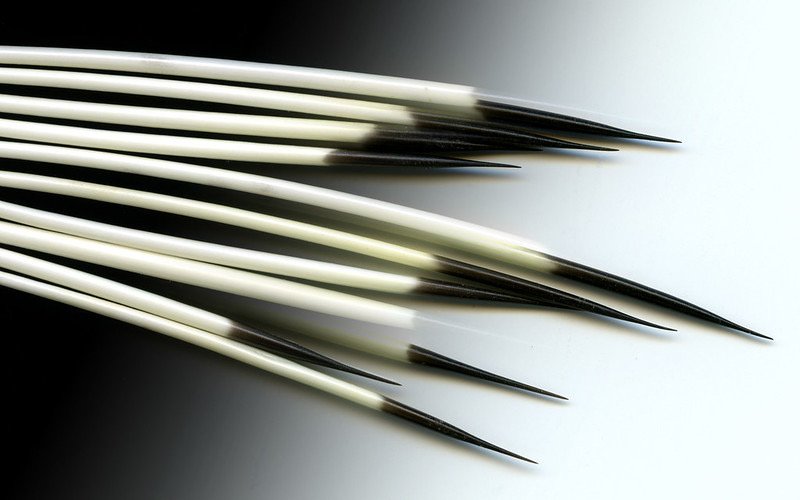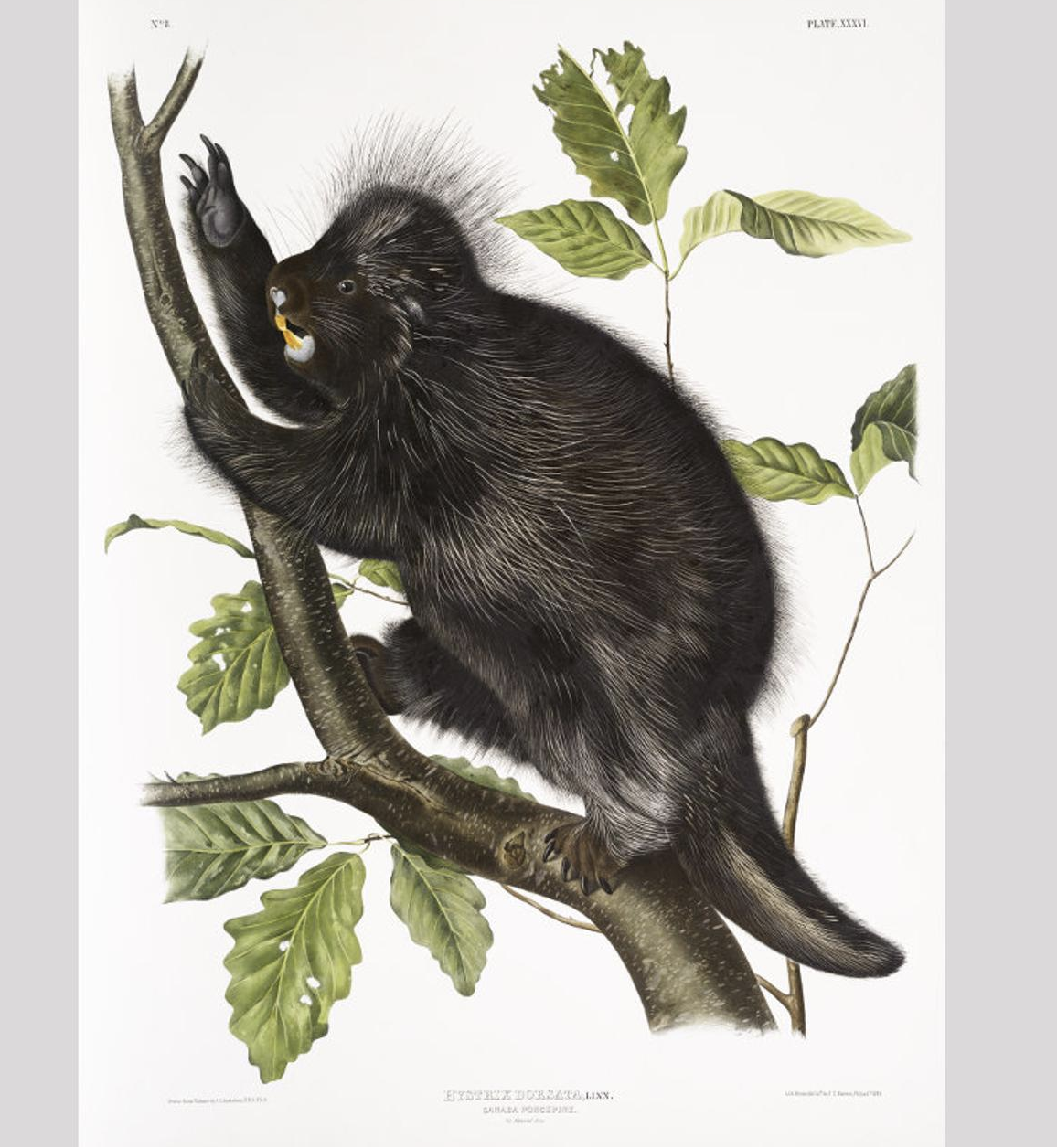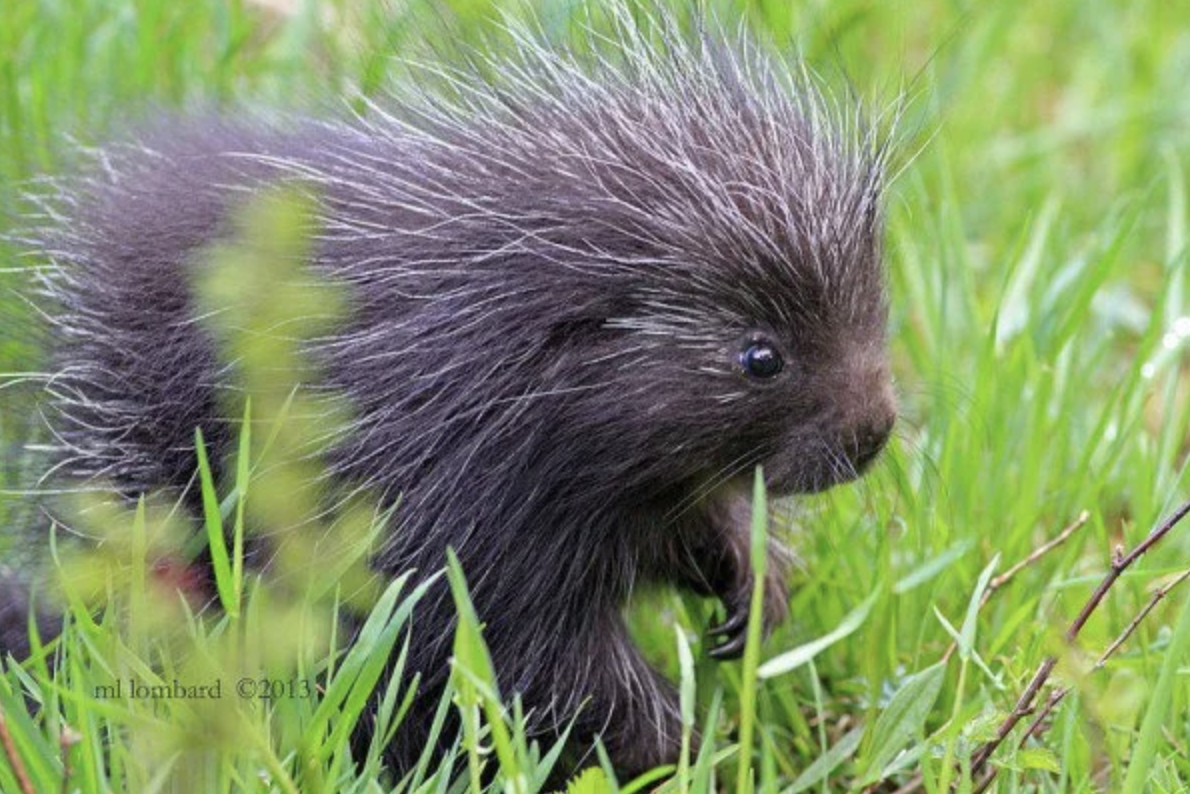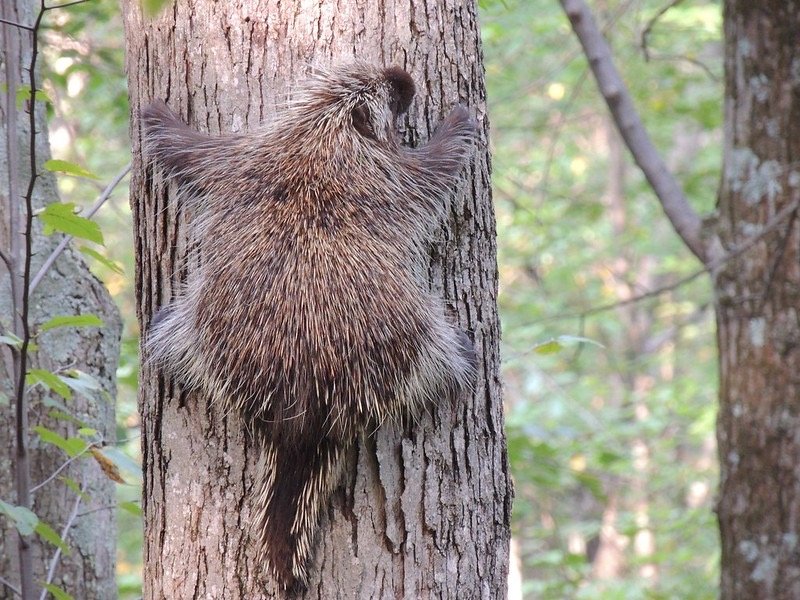Porcupines
Porcupines
Do you know porcupines climb trees? American porcupines are another misunderstood animal. Many folks believe they can shoot their quills at you? But it’s just not true.
But first, have you ever seen a porcupine in the wild? Maybe high up in a tree? Wait, they climb trees?
Yup and they fall out of trees a lot since they love the tender leaf buds at the very tip of branches. The branch breaks and well, you know what happens.

Porcupines love to climb trees but sometimes fall out. Ouch! Photo: Bernell MacDonald

Porcupines live in the northern and western United States and Canada. Diagram: Peppermint Narwhal
The American porcupine
Out of the 29 species of porcupine (wow, that seems like a lot), there is only one living in the US or Canada. It is the American porcupine, also called the Canadian porcupine.
And take a guess at how many porcupine quills the American porcupine has on its 20-pound body? A couple of hundred? No, try over 30,000 quills on just one porcupine. Amazing!
The superpowers of porcupine quills

Porcupines have over 30,000 quills on their bodies. Wow! Photo: Kara Stenberg/Flicker
Ah, but here is where their superpowers come into play. Each quill is coated with antibiotics that heals the impaled skin. Not only do they heal themselves from these self-inflicted wounds, but your dog will also heal quickly if impaled.
Porcupine myths
There are many false myths about these incredible animals.
Myth 1: They throw their quills at people or animals when threatened. Nope, you have to come in contact with the porcupine quills to have them stick you.
Myth 2: Porcupine quills will fall out on their own if attached. No again. You have to pull them out which is not an easy or painless task. If you or your animal gets impaled, seek help quickly so the quills don’t become further embedded.

An illustration of an American porcupine climbing a tree.
Porcupine facts
![]()
- When a porcupine has babies, they are called porcupettes. And are they ever cute! American porcupines usually only have one baby born each year and their quills harden about an hour after birth.
- Porcupines are herbivores and especially like wood. Plus they have an intense craving for salt. So if you see wood-handled tools or canoe paddles knawed on, it just might be a porcupine.
- They also like to eat outhouses, if you happen to have one. Now that is curious. But think about it. Outhouses collect a lot of urine which is loaded with salt. Ahh, disgusting but now I see.
- When threatened, the porcupine will give off a strong odor to warn off predators. If that doesn’t work, they will squeeze the muscles near the skin, making their quills stand out. If the predator gets too close, they will get a face full of porcupine quills. Yikes!
- And those quills are hollow which helps the porcupine float making them very good swimmers. Hmm, they climb trees and swim. Our kind of sports!
- A porcupine group is called a prickle. How appropriate!

Baby porcupines are called porcupettes. Cute! Photo: ML Lombard
The benefits of American porcupines

Think of porcupines as free tree trimmers. Photo: James Gates/Flicker
They do eat trees, dropping branches along the way, which in turn provides habitat for other critters. Think of them as free tree pruners.
Birds will use vacated porcupine dens, often in hollow trees, once the porcupine has left. An instant birdhouse.
And of course, they are prey for other animals such as bobcats, great horned owls and wolves. But how do they eat them with all those quills? The predator flips the porcupine on its back since its belly has no quills.
Learn more
Smithsonian North American Porcupine
National Geographic “Porcupines”
Facts About Porcupines, LiveScience

A porcupine group is called a prickle. Photo: Mattnad/ Wikicommons
